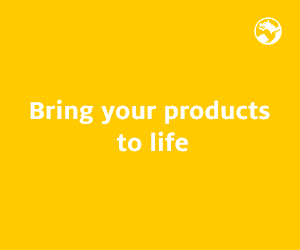The latest news, trends, analysis, interviews and podcasts from the global food and beverage industry

In May, the UK government announced that it had reached a new trade agreement with the EU, a major update since Brexit, which promised to support British businesses, lower costs for consumers and add nearly £9 billion to the UK economy by 2040. Many parts of the trade deal appealed to F&B producers, including the cutting of red tape, which made exports difficult. John Lancaster, head of EMEA and Food Consultancy at Stone X, told FoodBev how the deal will impact the dairy industry and commodity pricing.
The UK’s exit from the European Union was much more than a political reshuffle; it represented a seismic shift for UK agriculture, especially for the dairy sector. The new UK/EU trade deal, often described in headlines as 'tariff-free, quota-free,' was greeted with relief by many. But, as is often the case in the world of dairy, the real story lies in the fine print and daily realities, where non-tariff barriers and regulatory frictions reshape how milk, cheese and cream flow between farms, markets, and ultimately, consumers.
The hidden frictions beyond tariffs
While headlines focused on the absence of tariffs or quotas, dairy farmers and exporters quickly realised that the trade deal introduced a suite of new administrative hurdles. The UK and EU now treat each other as 'third countries,' meaning any dairy products moving across the Channel are subject to rigorous sanitary and phytosanitary (SPS) checks.
For the dairy sector, this means a surge in paperwork, from export health certificates (veterinary certificates) to supporting documentation that must accompany every load, regardless of the product’s destination.
The effect has been pronounced. Previously, a lorry of cream could move from the UK to France almost as freely as it could from Devon to Dorset. Now, a missed signature or a small error in the paperwork can see a shipment delayed for hours, even days – an existential threat for fresh dairy products with short shelf lives.
These frictions have led many small and medium-sized enterprises to reconsider or even halt their EU exports, unable to absorb the additional administrative overhead.

Dairy pricing ripples through the market
These new frictions have direct implications for pricing and market dynamics. For products with longer shelf lives, like cheese, the UK’s larger processors have generally managed to adapt, but for short shelf-life products, especially fresh cream and skimmed milk, the stakes are higher.
In years of strong milk production, like this year when favourable weather conditions sent UK grass growth (and thus milk yields) soaring, surplus cream and milk would traditionally find a home in continental Europe.
Now, with SPS checks and documentation slowing this flow, surplus product often has nowhere to go but the domestic market, putting downward pressure on spot prices.
In practice, this means that processors are sometimes left with a glut of product worth less than it would be if exports to the EU were seamless. Overhead costs also erode what could otherwise be a better return for the farmer, as processors must deduct the expense of compliance from the price paid for milk.
Yet, it’s important to note that the broader pricing trends for dairy commodities in the UK and EU still largely move in tandem.
The two markets remain deeply interconnected. But as SPS barriers create new ‘edges’ in the market, even small disruptions or delays can trigger local price volatility, particularly in those short shelf-life products most vulnerable to spoilage and delays.

Volatility in UK/EU dairy trade
Volatility is nothing new for the dairy sector, but the nature of that volatility is evolving. The UK, traditionally a net importer of dairy, has in recent months seen strong milk collections that will likely see reduced imports in 2025.
This elevated supply, combined with administrative barriers to export, has meant that local spot prices can swing more sharply in response to relatively small changes in supply and demand.
Dairy pricing is, by its nature, inelastic – small shifts in supply or demand can drive outsized moves in price. The post-Brexit trade realities only amplify this, as the friction of paperwork and SPS checks can turn what might have been a manageable surplus into a local price headache.
The hope is that as both sides move toward a potential common SPS zone (discussions are ongoing, with possible implementation by 2027), some of these frictions will ease, restoring more fluid trade and pricing stability.

Adapting for the future
In the face of these challenges, dairy farmers and processors are demonstrating their characteristic resilience and adaptability.
Some have diversified their product lines, focusing on value-added dairy products or new domestic markets to offset lost EU trade. Others are investing in better logistics, compliance training and technology to streamline the export process.
Yet, the reality remains that many smaller exporters have found the EU market less attractive, at least until regulatory alignment improves. For the sector as a whole, the next few years will be a period of adjustment, balancing the current administrative pain with the hope of longer-term solutions, such as a common SPS zone, that could re-open doors and restore lost value.
The UK/EU trade deal was just the beginning. For dairy farmers, the work of adaptation is ongoing – navigating new paperwork, coping with shifting market dynamics, and planning for a future where the only constant is change.













